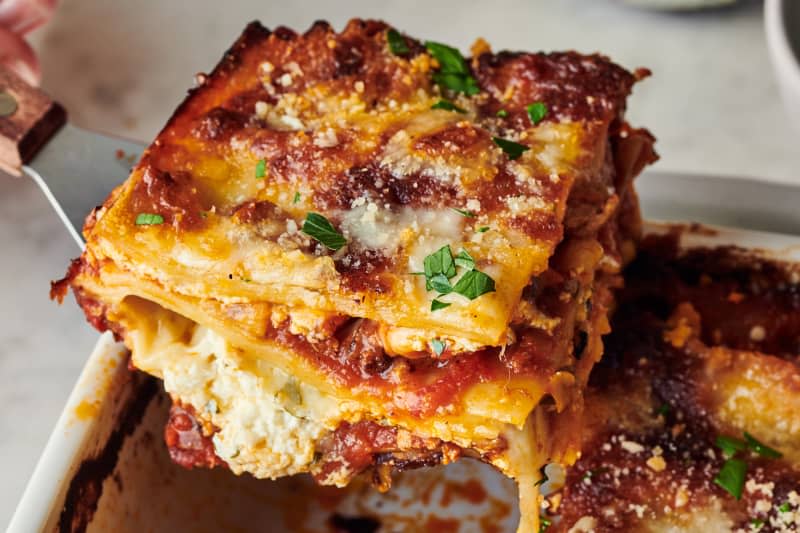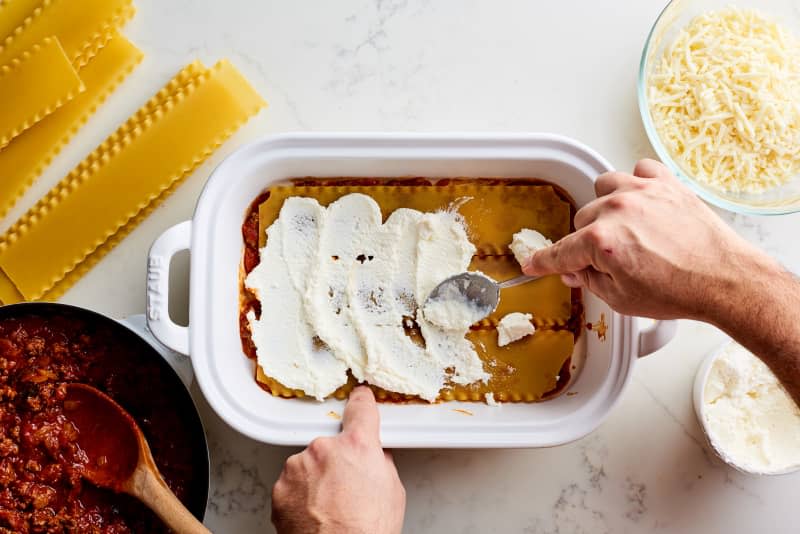I Never Use Ricotta for the Best-Tasting Lasagna — I Always Swap In This Instead (It’s a Game-Changer)

Lasagna is a labor of love. A good lasagna is a project — one well-worth the effort, in my opinion, but a project nonetheless. There are a whole bunch of roads you could go down when choosing your lasagna ingredients, as well. Should you make an easy version with ground beef? Nix the beef and go vegetarian? Or maybe skip the tomato sauce and make a white lasagna? The possibilities are nearly endless.
No matter what road you choose, they’re almost certain to have one key ingredient in common: ricotta cheese. Ricotta is as ubiquitous in lasagna as mozzarella, and for good reason. It adds a backbone of creaminess that balances out the acidity of the tomato sauce, while also having a mild-enough flavor that acts as a blank canvas for the other flavors in the cheesy layers of this classic casserole.
But what if I told you there was a better way? A cheese that is even better suited to lasagna than classic ricotta? Well, hold onto your seats. It’s cottage cheese!

Ricotta vs. Béchamel
Let’s get this out of the way: Ricotta itself is a shortcut ingredient in lasagna. The lasagna that most American recipes are styled after is from the Emilia Romagna region of Italy and includes both a Bolognese sauce and a béchamel sauce. Béchamel is a combination of milk or cream, butter, and flour that is cooked on the stovetop. American recipes nixed the béchamel in favor of ricotta largely for convenience — you don’t have to cook a second sauce.
What Is Cottage Cheese?
Cottage cheese is essentially fresh cheese curds. One of the biggest differences between ricotta and cottage cheese is the size of the curds, which affects the texture of the cheese. Ricotta is smoother with much smaller curds, while cottage cheese has a larger curd and a “lumpier” texture.
Why You Should Add Cottage Cheese to Lasagna
Cottage cheese has a very similar light, creamy flavor to ricotta, which makes it an equally good base for a cheesy faux-béchamel mixture with herbs, Parmesan cheese, and cream. What makes cottage cheese a great choice for lasagna is its tolerance for heat. Ricotta can curdle and become grainy at high temperatures, while cottage cheese does not. It retains its creamy consistency even after a long trip in the oven sandwiched between hot sauces, meats, veg, and noodles.
How to Substitute Cottage Cheese for Ricotta in Lasagna
You can substitute an equal amount of cottage cheese for the ricotta in most lasagna recipes that call for it. I learned this trick when I was a recipe developer at America’s Test Kitchen, and they add a bit of heavy cream to the cheese mixture for added creaminess. I’ve baked lasagnas both with and without adding cream to the cottage cheese mixture and have enjoyed it both ways.
Lasagna Recipes to Try with Cottage Cheese
This article originally published on The Kitchn. See it there: I Never Use Ricotta for the Best-Tasting Lasagna — I Always Swap In This Instead (It’s a Game-Changer)
Further Reading
You’re Not Allowed to Lock Strollers at Disney Theme Parks, So Instead I Do This
The 14 Best Costco Items to Buy for Quick Family Meals
This $16 Find Is One of the Best Purchases I've Ever Made at IKEA


